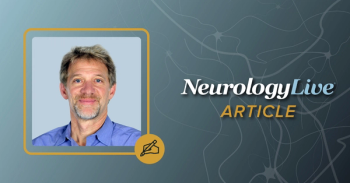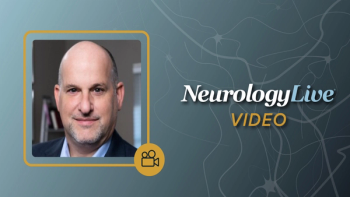
Multilevel Impact Fenfluramine’s Approval Brings to Lennox-Gastaut Syndrome
As a primary investigator for fenfluramine’s pivotal phase 3 program, Kelly Knupp, MD, MSCS, FAES, provided insight on new results presented at AAN 2022, as well as the positive ripple effect its recent approval brings to patients with Lennox-Gastaut syndrome.
Lennox-Gastaut syndrome (LGS) is a severe condition characterized by recurrent seizures that begin early in life. The 3 main forms of treatment of LGS are antiseizure medications, dietary therapies such as the ketogenic diet, or device/surgery using vagus nerve stimulation or corpus callostomy. In late March 2022, the FDA approved an
The basis for the approval was data from the phase 3 Study 1601 (NCT03355209), which showed that treatment with fenfluramine at a dose of 0.7 mg/kg/day was superior to placebo in reducing monthly drop seizure frequency (MDSF). Recently, investigators presented interim results from the open-label extension of Study 1601, which showed a median percentage decrease of 39.4% in MDSF at month 3 that was sustained up to 12 months (–51.8%). By the end of months 10 to 12 in the open-label extension period, 51.2% (n = 87) of patients experienced at least 50% reduction in drop seizure frequency, and approximately 50% of investigators and caregivers rated patients as "much improved" or "very much improved."
Since the trial program began, lead investigator
NeurologyLive®:Can you discuss what the newly presented data is indicating?
Kelly Knupp, MD, MSCS, FAES: I just presented the 1-year follow-up data of patients with Lennox-Gastaut in the open-label extension. It’s exciting to see their sustained response to medication. The 2 other important things to see from the open-label extension data is that not all patients went up to the maximum dose of 0.7 mg/kg per day. Only about 30% of the patients were at tat higher dose and most patients were at a dose range of 0.3 to 0.5 mg/kg per day. I certainly think that’s exciting that patients weren’t choosing to go up to a higher dose. There’s a small percentage of children (6.5%) who were seizure free or nearly seizure free, meaning they had no zero or one seizure during the open-label extension. This is a patient population that very rarely sees seizure freedom unless they’ve had epilepsy surgery. I know it sounds like a small number, but to see that number was exciting.
What has been the biggest takeaways of the medication in your experience treating patients?
Anytime we’re choosing a medication, we’re always looking at the risk for side effects and weighing side effects vs the benefits of the medication. Many of our medicines cause increased weight gain. While we worry about the decrease in appetite, for some of our patients this [fenfluramine] may be a benefit for them to maintain their weight. That’s something to consider when you’re thinking about this. Normally when we titrate a medication, we go up every week or so to a bigger dose. Something that I do differently with this medication that hasn’t been studied or discussed is, is that it’s helpful to make an adjustment and then watch for 4 weeks before we make the next adjustment. That’s how the open-label extension was designed. A number of my patients saw ongoing improvement over that 4-week period without us making an adjustment in their medication. Perhaps, we do need to more slowly titrate this medication to see the full benefit.
Could that point to a delay in effect of fenfluramine for patients with LGS?
I don’t know if it’s a delay. I think it just takes time to see the full benefit of the dose adjustments that you’ve made. If we’re making adjustments every week instead of every 4 weeks, you may overshoot the dose that the child needs to be on. That’s just a pearl I’ve been doing in my own practice. I feel that I have a number of patients that haven’t maximized their dose and have seen significant benefit because we’ve been patient with it.
How will care for these patients changed with this new approval?
There are a number of things that have contributed to that change. It’s always excited to have another medication to offer families that works by a different mechanism. It gives us more tools to help manage that particular patient. When thinking about the patient population overall, Lennox-Gastaut is a disorder that has lots of different ideologies. With genetic testing, we’re better able to identify the etiologies for several of these patients. It may be that there is a particular drug that works better for one particular genetic disorder and so it’s allowing us to start to cohort those patients.
Thinking back to fenfluramine, many children with Dravet syndrome do meet criteria for Lennox-Gastaut. We know that the response rates looked better in the Dravet population than they did for the Lennox-Gastaut population. Having a genetic diagnosis may help guide us in management. I suspect that might be true for a number of other genetic disorders as well. We hope we could then say, "You have genetic mutation X, Y, Z, etc, which meets the criteria for Lennox-Gastaut, but when we look at the 10 medications that are available, we know a particular medicine works better than another.”
Looking ahead, what are some of the critical needs in LGS that still need addressed?
We still have children seizing. The critical need is to have treatments that are effective for every child, not just 6.5% of children. There’s still a huge critical need. Seizures are a small portion of what these children and families live with though. They also have intellectual impairments, behavior and sleep issues, and motor issues. We need to make sure that we’re addressing all the needs of the child. I do think that as we’ve seen better control of seizures, the better some of those are things are. It’s not as simple as just addressing the seizures. We need to address the holistic view of the child. Every step forward that we make is better. We also have to figure out how to intervene earlier. How do we recognize these children earlier and get them to treatment as quick as possible? That’s true for all patients. Many children with Lennox-Gastaut don’t get diagnosed until much later. We know that at least one-third, if not more, of children who had infantile spasms will evolve into Lennox-Gastaut. Is that a crucial point where we can intervene and prevent the development of Lennox-Gastaut. There’s a lot of work yet to be done.
Transcript edited for clarity.
REFERENCES
1. Knupp K, Scheffer I, Ceulemans B, et al. Interim analysis of long-term safety and efficacy of Fintepla (fenfluramine) in patients with Lennox-Gastaut syndrome. Presented at: 2022 AAN Annual Meeting; April 2-7; Seattle, Washington. Abstract 3305
Newsletter
Keep your finger on the pulse of neurology—subscribe to NeurologyLive for expert interviews, new data, and breakthrough treatment updates.



























